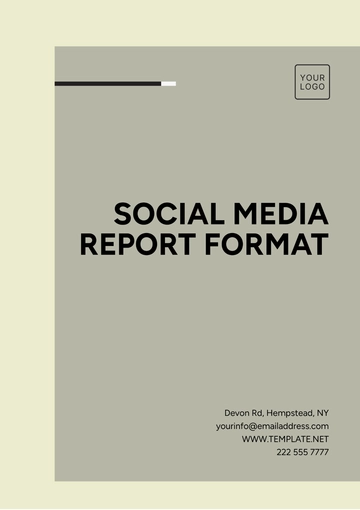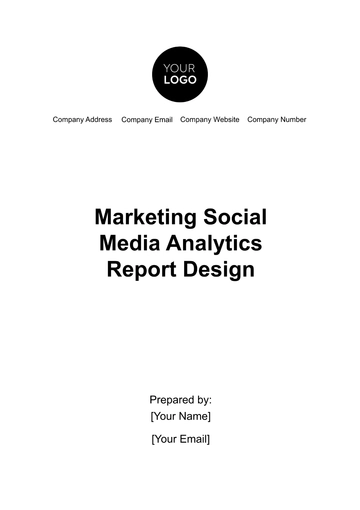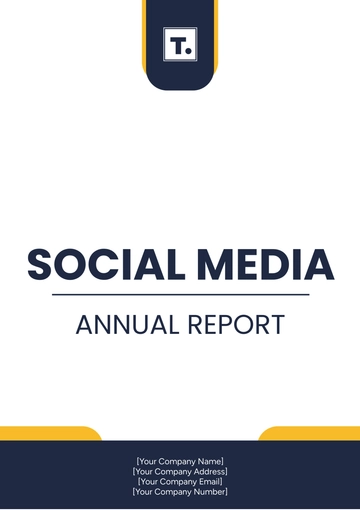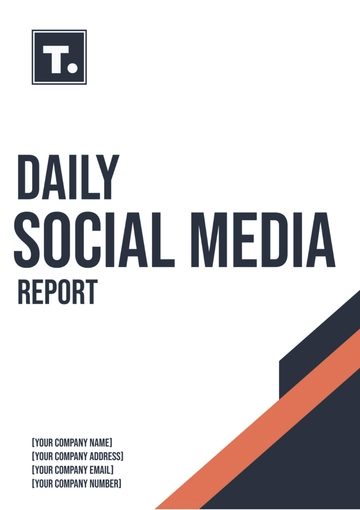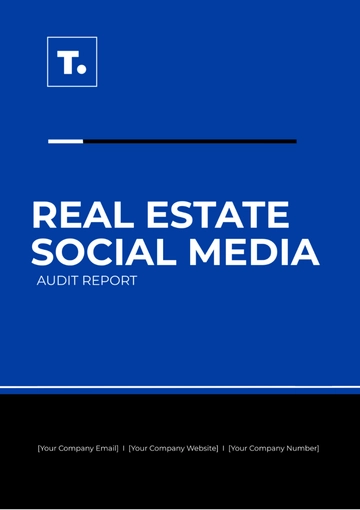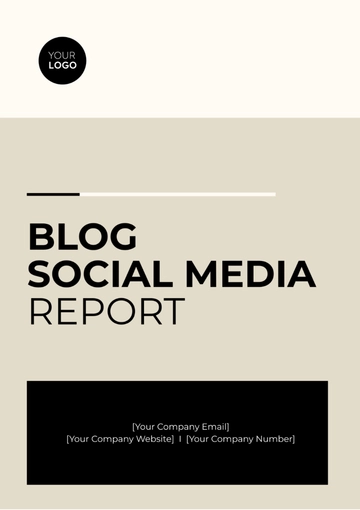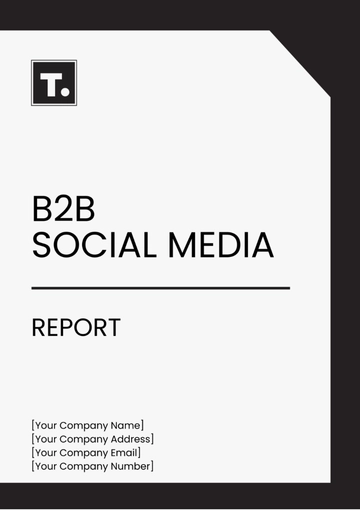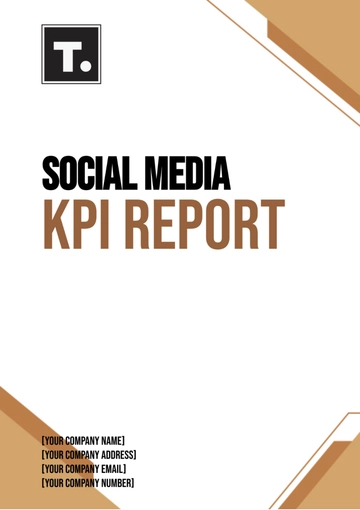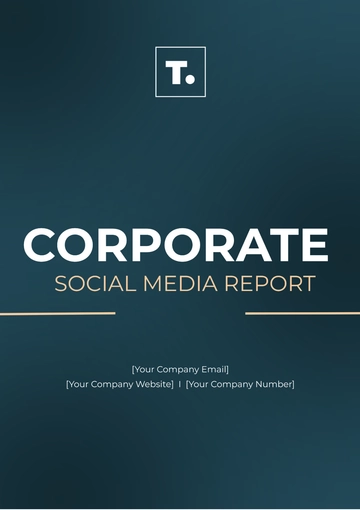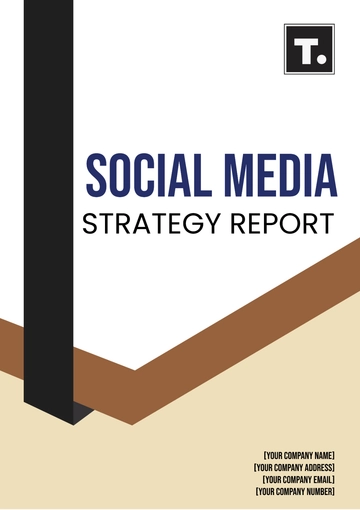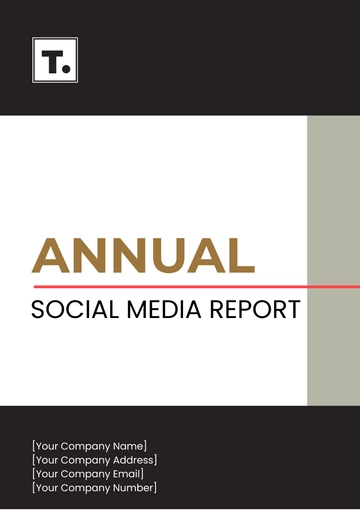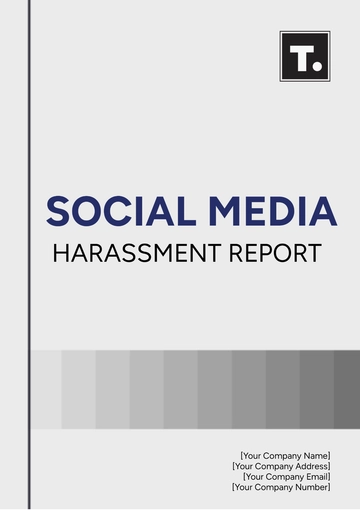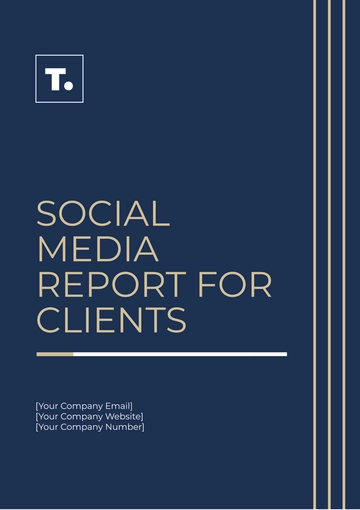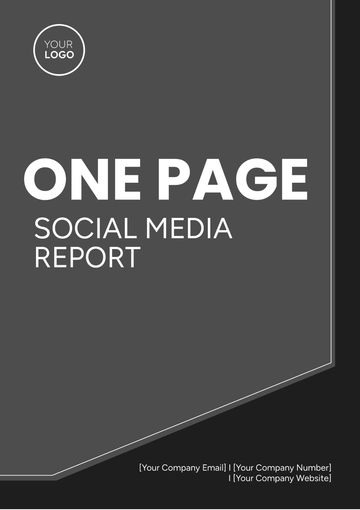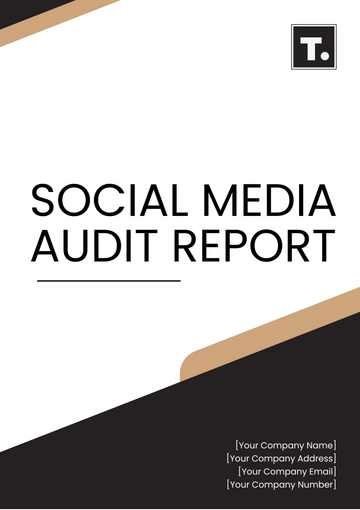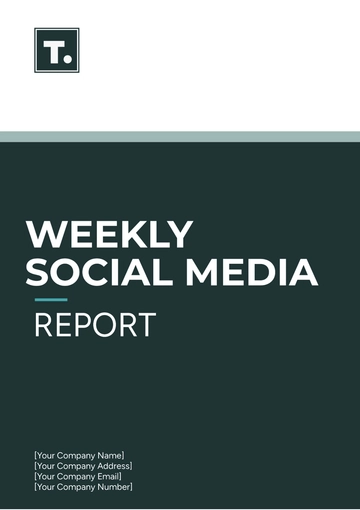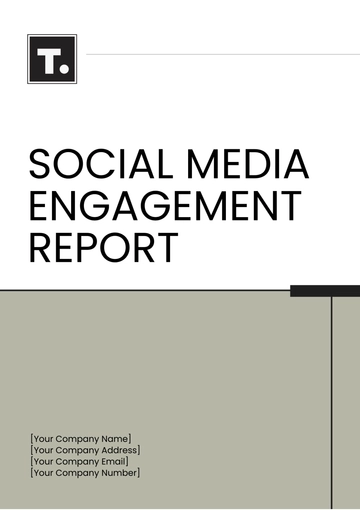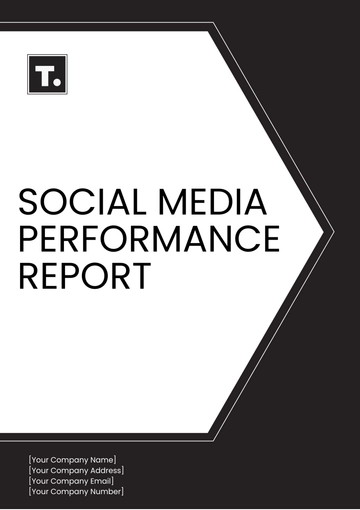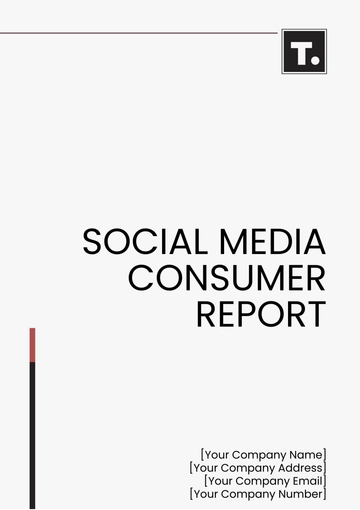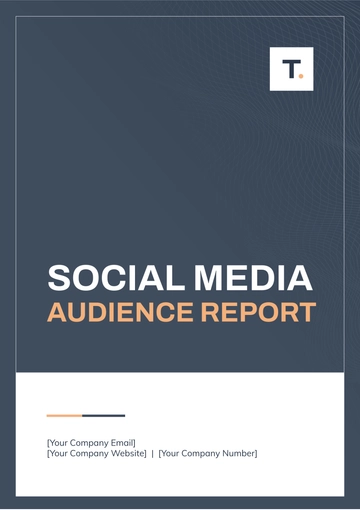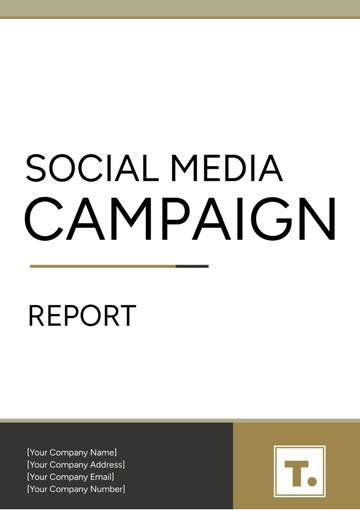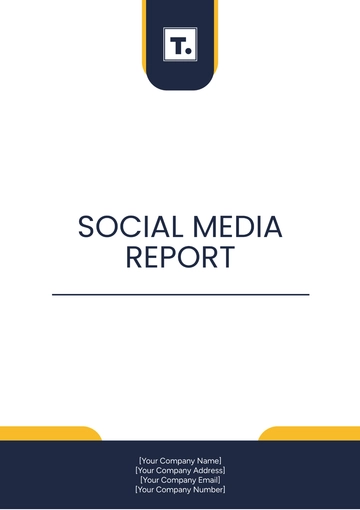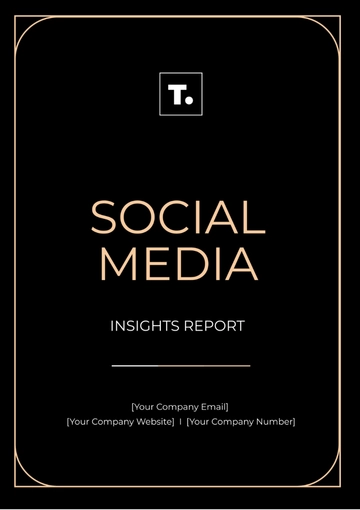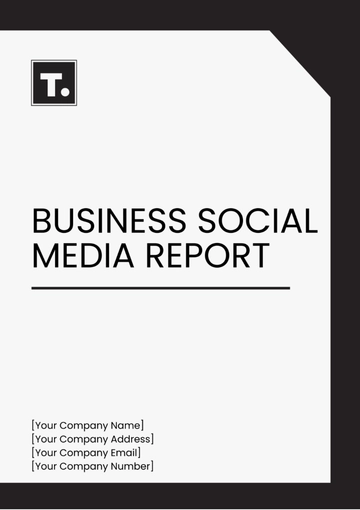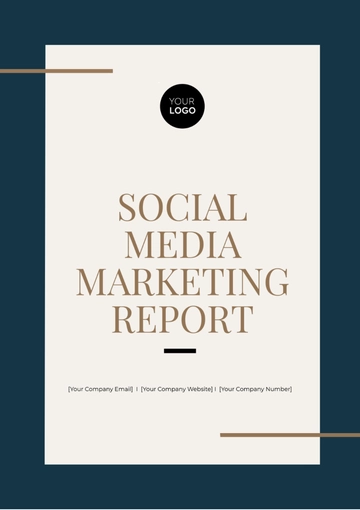Free Social Media Strategy Report
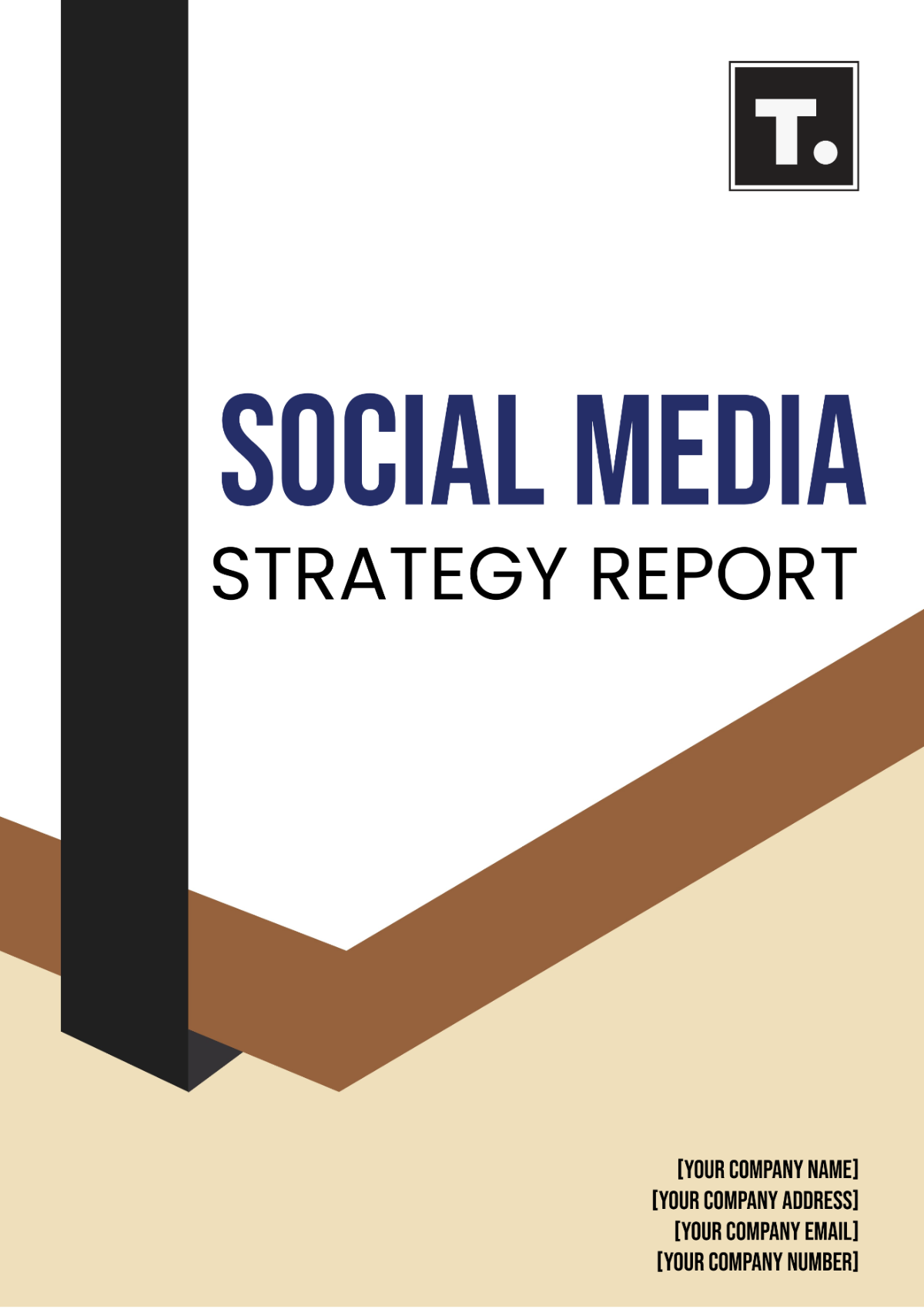
I. Executive Summary
In this section, we provide a concise overview of the social media strategy developed for [Your Company Name].
A. Objectives
Increase brand awareness by 30% within the next year.
Drive website traffic by 50% by the end of 2052.
Boost engagement rates on all social media platforms.
B. Key Findings
Current social media presence lacks consistency.
Audience engagement is low due to irregular posting schedules.
Competitors are leveraging influencer partnerships effectively.
C. Recommendations
Implement a content calendar to ensure consistent posting.
Explore influencer collaborations to reach a wider audience.
Invest in paid advertising to boost visibility.
II. Current Social Media Landscape
This section evaluates the current state of [Your Company Name]'s social media presence.
A. Platforms Overview
Platform | Audience Size | Engagement Rate | Key Insights |
|---|---|---|---|
100,000 followers | 2.5% | Most engagement is visual content. | |
80,000 followers | 3.2% | High engagement with Stories. | |
50,000 followers | 1.8% | Limited engagement due to sporadic posts. | |
30,000 followers | 2.0% | Professional content performs well. |
B. Audience Analysis
[Your Company Name]'s audience primarily consists of millennials
aged 25–34.
The majority of followers are interested in technology and innovation.
Engagement peaks during weekdays between 6 PM and 9 PM.
III. Content Strategy
This section outlines the proposed content strategy to enhance engagement and brand visibility.
A. Content Themes
Behind-the-Scenes: Showcasing the company culture and team dynamics.
Product Spotlights: Highlighting key features and benefits of products.
User-Generated Content: Encouraging customers to share their experiences.
B. Content Calendar
Utilize scheduling tools to plan posts in advance.
Maintain a balance between promotional and informative content.
Incorporate trending topics and relevant hashtags.
IV. Engagement Strategy
This section focuses on strategies to increase audience engagement across social media platforms.
A. Community Management
Respond promptly to comments, messages, and mentions.
Encourage dialogue by asking questions and seeking feedback.
Monitor social media channels for brand mentions and conversations.
B. User Interaction
Host interactive sessions such as Q&A sessions and polls.
Encourage user-generated content through contests and challenges.
Collaborate with influencers and brand ambassadors to amplify reach.
V. Performance Metrics
This section outlines key performance indicators (KPIs) to measure the success of the social media strategy.
A. Metrics
Engagement Rate: Increase by 10% within the first quarter.
Follower Growth: Achieve a 20% increase by the end of the year.
Website Traffic: Drive 100,000 visitors per month from social media.
B. Monitoring and Reporting
Regularly monitor analytics to track progress towards goals.
Generate monthly reports to analyze performance and identify areas for improvement.
Adjust strategy based on data insights and emerging trends.
VI. Conclusion
In conclusion, this social media strategy aims to elevate [Your Company Name]'s online presence, increase brand awareness and foster meaningful connections with our audience. By implementing the proposed recommendations and continuously refining our approach, we are poised for success in the dynamic landscape of social media marketing.
For inquiries or further information, please contact [Your Name] at [Your Email].
- 100% Customizable, free editor
- Access 1 Million+ Templates, photo’s & graphics
- Download or share as a template
- Click and replace photos, graphics, text, backgrounds
- Resize, crop, AI write & more
- Access advanced editor
Presenting the Social Media Strategy Report Template, exclusively on Template.net. Crafted to assist in formulating, analyzing, and refining your social media strategies, this resource offers editable and customizable features to suit your specific needs. With our Ai Editor Tool, seamlessly modify and enhance your strategies to achieve optimal results in the dynamic landscape of social media.
You may also like
- Sales Report
- Daily Report
- Project Report
- Business Report
- Weekly Report
- Incident Report
- Annual Report
- Report Layout
- Report Design
- Progress Report
- Marketing Report
- Company Report
- Monthly Report
- Audit Report
- Status Report
- School Report
- Reports Hr
- Management Report
- Project Status Report
- Handover Report
- Health And Safety Report
- Restaurant Report
- Construction Report
- Research Report
- Evaluation Report
- Investigation Report
- Employee Report
- Advertising Report
- Weekly Status Report
- Project Management Report
- Finance Report
- Service Report
- Technical Report
- Meeting Report
- Quarterly Report
- Inspection Report
- Medical Report
- Test Report
- Summary Report
- Inventory Report
- Valuation Report
- Operations Report
- Payroll Report
- Training Report
- Job Report
- Case Report
- Performance Report
- Board Report
- Internal Audit Report
- Student Report
- Monthly Management Report
- Small Business Report
- Accident Report
- Call Center Report
- Activity Report
- IT and Software Report
- Internship Report
- Visit Report
- Product Report
- Book Report
- Property Report
- Recruitment Report
- University Report
- Event Report
- SEO Report
- Conference Report
- Narrative Report
- Nursing Home Report
- Preschool Report
- Call Report
- Customer Report
- Employee Incident Report
- Accomplishment Report
- Social Media Report
- Work From Home Report
- Security Report
- Damage Report
- Quality Report
- Internal Report
- Nurse Report
- Real Estate Report
- Hotel Report
- Equipment Report
- Credit Report
- Field Report
- Non Profit Report
- Maintenance Report
- News Report
- Survey Report
- Executive Report
- Law Firm Report
- Advertising Agency Report
- Interior Design Report
- Travel Agency Report
- Stock Report
- Salon Report
- Bug Report
- Workplace Report
- Action Report
- Investor Report
- Cleaning Services Report
- Consulting Report
- Freelancer Report
- Site Visit Report
- Trip Report
- Classroom Observation Report
- Vehicle Report
- Final Report
- Software Report

